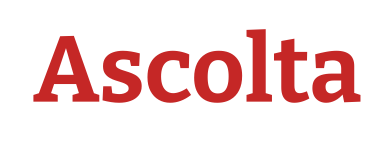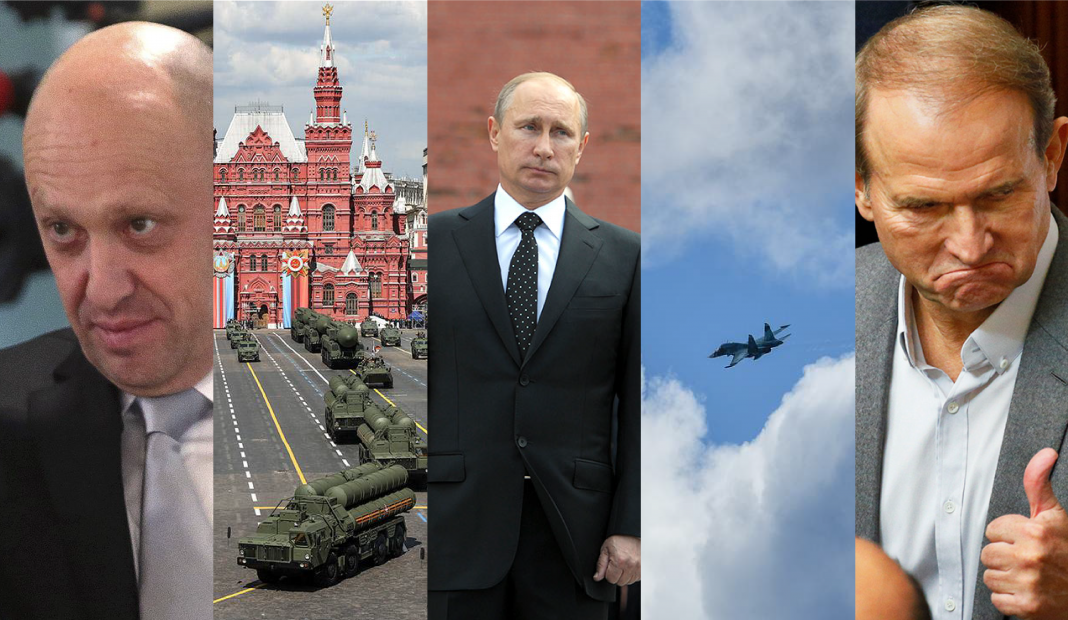This report describes the key events that significantly impacted Russia’s political, economic and social processes.
Based on the results of the past week, the following trends can be summarised:
- As the election campaign intensifies, the Russian president is increasingly defiantly switching to the domestic political agenda and devoting much more time to regional issues. Thus, over the past two weeks, Putin has held most of his meetings with the heads of Russian regions and heads of state structures. At the same time, in every possible way, Putin disowns the so-called “SMO”, which is noticeable by the regular refusals of his press secretary to comment on any events related to hostilities. Such tactics are aimed at minimising the risks associated with the growing displeasure of the electorate, which is losing faith in the possibility of achieving the goals of the war against Ukraine.
- Similar to Putin’s abstraction from the so-called “SMO”, there is a noticeable shift in emphasis from military operations to internal proceedings, often accompanied by attempts to redistribute influence in the temporarily occupied territories of Ukraine. This situation leads to the demoralisation of the personnel of the Russian Armed Forces and the strengthening of internal contradictions. At the same time, the positions of a number of PMCs participating in hostilities in the Donbas are significantly strengthened. In this case, the conflict between Yevgeny Prigozhin and the military leadership of the Russian Federation should not be seen as a threat to Putin’s power but as a controlled crisis of the system launched to cleanse and reform it.
- The outline of communications at the geopolitical level is becoming more and more visible. Indirect diplomacy between Moscow and Washington is growing significantly, which may indicate attempts to find a common language in several areas. At the same time, it is not worth saying that any agreements on Ukraine may be reached soon. The United States is also confidently demonstrating the position of not accepting any conditions for negotiations other than Ukrainian ones. At the same time, there are other vital points of contact in relations between the two states. According to Ascolta, Moscow plans to officially withdraw from the Treaty on Conventional Armed Forces in Europe (CFE) soon, which will entail another wave of escalation between Russia and the West. At the same time, in this situation, it is still worth talking about an attempt to sharply raise the stakes in further negotiations and not unleash a World War III.
This digest discusses the following issues that were most relevant for Russia from 8 to 14 May:
1. Victory Parade on Red Square.
2. The definition of “party of peace” and “party of war” from “Nezygar”.
3. The crash of Russian military aircraft and helicopters in the Bryansk region.
4. Continuation of the “demarche” curator PMC “Wagner” Yevgeny Prigozhin.
5. New article by Viktor Medvedchuk for the Russian edition of Telegraph.
This Content Is Only For Subscribers
- THE VICTORY PARADE ON RED SQUARE
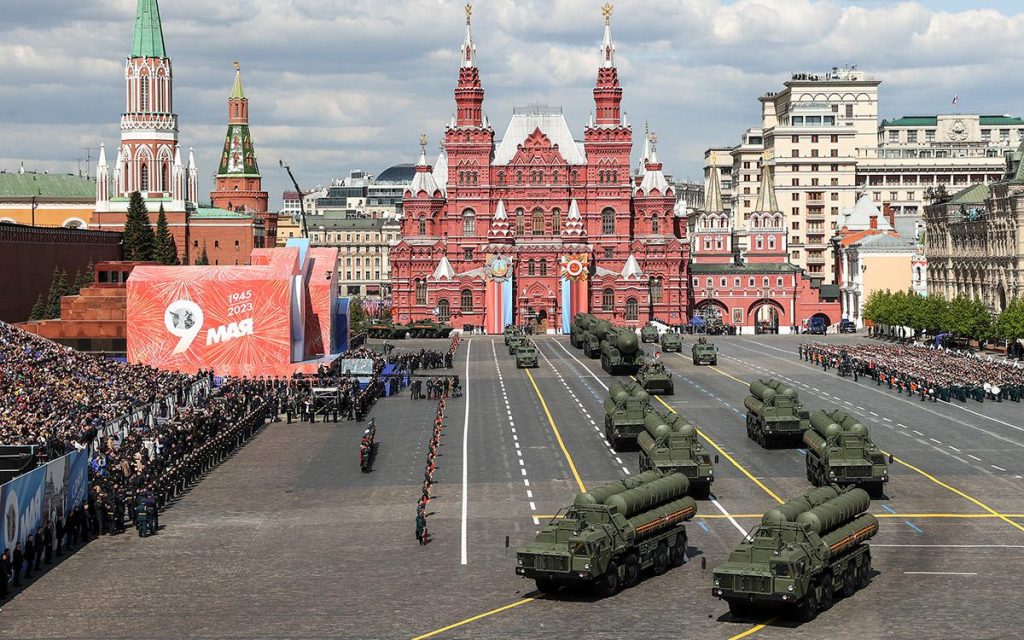
On Tuesday, May 9, a traditional military parade was held on Red Square, timed to coincide with the 78th anniversary of the Victory over Nazism. This year, the parade itself, as well as the list of leaders of foreign states who attended it, turned out to be relatively modest. Moreover, modesty was observed, including in Putin’s speech. At the same time, several significant points need to be analysed and taken into account.
Timeline:
- On Monday, May 8, Putin’s spokesman Dmitry Peskov announced the speech of the Russian president at the May 9 Victory Parade.
- Also on May 8, it became known that Prime Minister of Armenia Nikol Pashinyan, President of Belarus Alexander Lukashenko, President of Kazakhstan Kassym-Jomart Tokayev, President of Kyrgyzstan Sadyr Japarov, President of Tajikistan Emomali Rahmon, President of Turkmenistan Serdar Berdimuhamedov, as well as the President of Uzbekistan Shavkat Mirziyoyev.
- The Victory Parade on May 9 began with the parade of the Russian Flag and the Victory Banner to Red Square. Russian Defense Minister Sergei Shoigu opened the official part. Putin’s speech was very concise and did not include any announcements or calls to action (its summary is presented below).
- More than 8,000 servicemen, including 530 soldiers of the special military operation, marched through Red Square as part of a foot column.
- The mechanised column was opened by the “Victory Tank” T-34-85. Armoured vehicles “Tiger-M”, BTR-82A, infantry fighting vehicles “Boomerang”, operational-tactical missile system “Iskander-M”, anti-aircraft missile systems S-400 “Triumph” and mobile missile systems “Yars” also passed through the square. Among the parade participants, for the first time, the latest Spartak and 3-STS Akhmat armoured vehicles were demonstrated.
- After the end of the parade, Putin had dinner with the presidents who came to the parade in Moscow, but Alexander Lukashenko was not there.
- The Ukrainian Foreign Ministry called the visit of the leaders of Armenia, Kazakhstan, Belarus, Kyrgyzstan, Tajikistan, Turkmenistan and Uzbekistan to Moscow for the May 9 parade an unfriendly step towards Ukraine and disdain for the Ukrainian people.
- Mayor of Dnipro Boris Filatov named the leaders of the states who arrived at the Victory Parade in Moscow “[assholes]”.
Putin’s key theses:
- “Today, civilisation is once again at a decisive turning point. A real war has once again been unleashed against our Motherland, but we have repulsed international terrorism, we will protect the inhabitants of Donbas, and we will ensure our security.”
- “For us, for Russia, there are no unfriendly, hostile peoples neither in the West nor in the East. On the contrary, like most people, we want a future of peace, freedom and stability.”
- “We believe that any ideology of superiority is inherently disgusting, criminal and deadly. However, the Western globalist elites still talk about their exclusivity, pit people and split societies, provoke bloody conflicts and upheavals, sow hatred, Russophobia, aggressive nationalism, and destroy family, traditional values that make a person a person.”
- “Exorbitant ambitions, arrogance and permissiveness inevitably turn into tragedies. This is precisely the reason for the catastrophe the Ukrainian people are experiencing. He became a hostage of the coup d’état and the criminal regime of his Western masters that had developed, on its basis, a bargaining chip in the implementation of their cruel, selfish plans.
- “It is essential that the leaders of the Commonwealth of Independent States countries have gathered here in Moscow today. I see in this a grateful attitude to the feat of our ancestors: they fought together and won together – all the peoples of the USSR contributed to the joint Victory.
Outcomes and outlook:
Ignoring Putin’s speech, in which not a single new message was sounded, the primary media attention was paid to the parade guests. Even a few days before the parade, most participants’ participation was not evident. Initially, it was planned that only the President of Kyrgyzstan would participate. However, according to Ascolta, at the very beginning of May, Vladimir Putin, through informal communication channels, conveyed to Washington that in the event of missile attacks on Crimea (and especially on the Crimean Bridge), Russia would consider the actions as an unfriendly step on the part of NATO, and therefore would leave behind the right to mobilise the potential of the entire CSTO bloc. The presence at the parade of all the leaders of the CSTO member states and the leaders of Uzbekistan and Turkmenistan who joined them apparently should have demonstrated that Putin was not joking.
The fact that most of the CSTO states are now under China’s expressive political and economic influence should have sent a signal to the West that Russia’s position has been agreed with Beijing. That was Putin’s main idea. The fact that the United States on the same day announced its refusal to provide Ukraine with long-range missiles (under the pretext that the UK provides similar missiles) is considered in Russia as a success of the event: today, the parties to the global conflict are not interested in raising the degree of confrontation around Ukraine. An important moment was the visit to Moscow by President of the Republic of Belarus Alexander Lukashenko, who fell seriously ill at the very beginning of May. His trip was fraught with a risk to his life. However, Lukashenko made a symbolic trip while refusing to speak (instead of him, the speech was read by the Minister of Defense of the Republic of Belarus, Viktor Khrenin) and left Moscow immediately after the end of the official part. This shows the level of discipline in making significant decisions – in fact, none of Moscow’s political allies in the post-Soviet space could avoid coming to the parade. And this once again underlines the fact that one should not ignore the possibilities of military-political mobilisation within the framework of the CSTO + format.
At the same time, it is worth paying attention to the political processes in Armenia and the activation of Azerbaijan in resolving the issue with Nagorno-Karabakh. According to Ascolta, MI6 Director Richard Moore arrived in Baku on Saturday, from where he left for Rome, after meeting with the country’s leadership. Several Western analysts are already predicting an escalation of the conflict by Azerbaijan to resolve the territorial dispute. Apparently, such an escalation can take place only with the consent of Turkey, which means it will not begin in the coming weeks (a second round of presidential elections is expected in Turkey and possible internal unrest against the backdrop of political processes). This situation is a severe challenge for the CSTO. Under such conditions, Ilham Aliyev’s refusal to attend the parade in Moscow (officially – due to several events dedicated to the centenary of his father, the predecessor in the presidency of Heydar Aliyev) looks rather symbolic.
- DEFINITION OF “PARTY OF PEACE” AND “PARTY OF WAR” FROM NEZYGAR
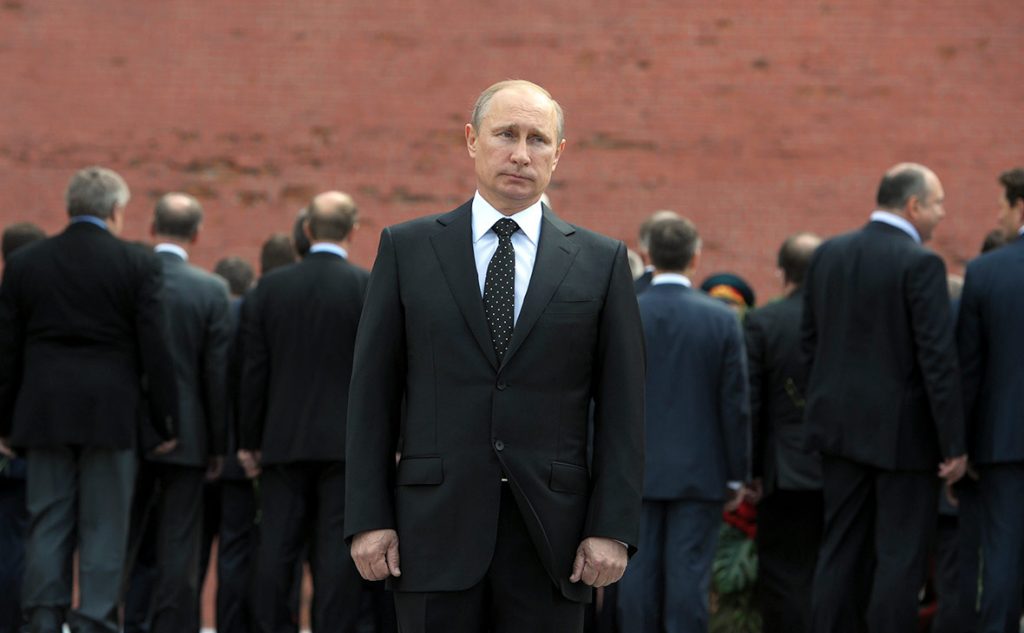
On Thursday, May 11, one of the largest and most influential telegram channels in Russia, Nezygar, offered its vision of the current political landscape in the country. Thus, according to the authors of the channel, over the fifteen months of the so-called “SMO”, as well as the accompanying sanctions restrictions, three main groups have formed in Russia, united by corporate and personal economic interests: the “peace party” or “capitalists”, “neutral” or “undecided”, as well as “victory party” or “hawks”.
Nezygar also published a list of the most active defendants in each of the camps:
Conditional “peace party” or “surrenders”:
- Roman Abramovich;
- Vladimir Potanin;
- Vladimir Medinsky;
- Yuri Borisov;
- Viktor Vekselberg;
- Vyacheslav Kantor;
- Alexander Voloshin;
- Mikhail Fridman;
- Vladimir Lisin;
- Vagit Alekperov;
- Arkady Volozh;
- Alexey Mordashov.
“In addition to those listed above, this category includes a couple of dozen socially significant figures in business, executive power, culture and the media. Regarding economic potential, the most powerful near-government group has huge foreign exchange and material assets abroad, indirectly in Ukraine. It is supported in joint interests by foreign corporations, the mass media and, behind the scenes, government agencies. They have hidden lobbyists at all levels of government. The actions of the “party of peace” include strange movements of troops due to negotiations, problems with logistics and supplies, and tough open and tacit opposition to attempts to introduce mobilisation elements in the economy,” Nezygar writes.
“Neutral” or “undecided”:
- Elvira Nabiullina;
- Anton Siluanov;
- Alexei Kudrin;
- Maksut Shadayev;
- Igor Shuvalov;
- Sergey Naryshkin;
- Andrey Kostin;
- Dmitry Kozak;
- Olga Lyubimova;
- Konstantin Ernst.
“The personalities of this group either avoid direct assessments of the [so-called] “SMO” and hybrid aggression of the West or maintain a “default figure” in the public space. In several cases, this position is due to the need to preserve lobbying opportunities in the interests of the “peace party”, without drawing attention to their political preferences. Some of the “undecided” defendants have real estate abroad and close relatives with foreign citizenship,” summarises Nezygar.
“Victory Party” or “Hawks”:
- Nikolai Patrushev;
- Viacheslav Volodin;
- Sergey Kiriyenko;
- Dmitry Rogozin;
- Ramzan Kadyrov;
- Evgeny Prigozhin;
- Konstantin Malofeev;
- Dmitry Mazepin;
- Igor Altushkin;
- Alexander Dugin.
“Those are supported by nationally oriented entrepreneurs. It has an incomparably weaker financial and economic potential compared to the comprador oligarchy. Powerful positions in power structures offset this. However, the inconsistency of actions and the lack of a single ideological and propaganda algorithm and tools for its implementation reduces the effectiveness of the actions of the “winners”, which is also weakened by subjective personal contradictions,” Nezygar adds.
Outcomes and outlook:
The structure suggested by “Nezygar” is somewhat conditional and combines personalities and figures of different sizes. Moreover, being in one category or another does not reflect the dynamics, main interests, or belonging to another class group. An attempt to systematise Russian politicians and public figures into three groups can hardly withstand criticism. “Nezygar” chose an initially erroneous technique, mixing “squares” and “green”.
At the same time, the publication of Nezygar received wide publicity, including among Western or Ukrainian audiences. Soon, we should expect the publication of many analytical materials in which the persons involved in the Nezygar list will act as unconditional representatives of the “peace” party and the “war” party. In this case, it should not be ruled out that such an approach was not used by chance. Its purpose was a banal distraction from individuals, or vice versa – forming the necessary images for certain representatives of political and business circles. Considering that the telegram channel itself is associated with the first deputy head of the Presidential Administration of the Russian Federation, Alexei Gromov, it is possible to predict who such “stigmatisation” can be beneficial for or, on the contrary, shake their positions.
In the near future, Ascolta will present its own version of the alignment of forces and groups of influence based on the interests and distance of each player from the decision-making centre.
- CRASH OF RUSSIAN MILITARY AIRCRAFT AND HELICOPTERS IN THE BRYANSK REGION
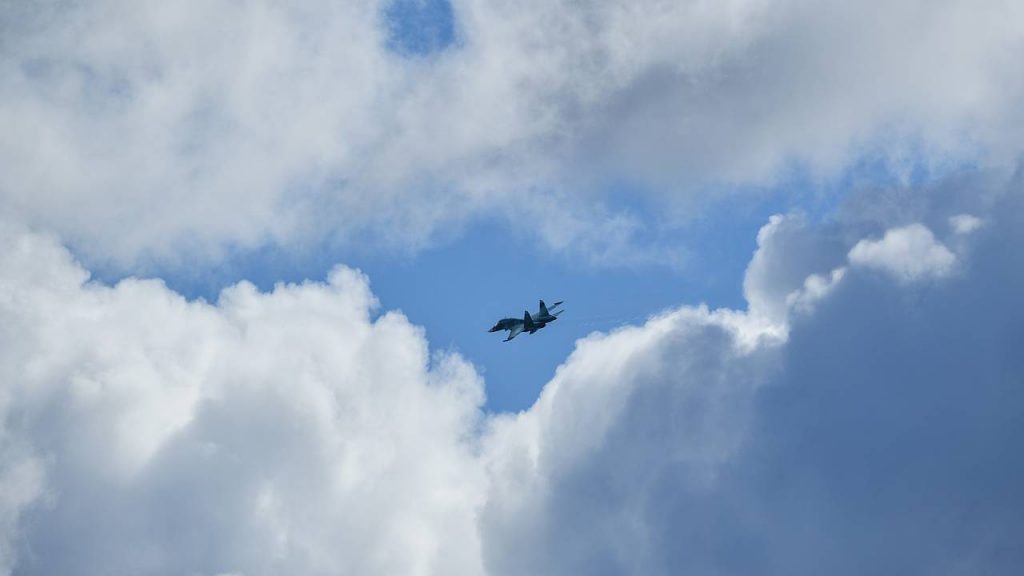
On Saturday, May 13, residents of the Bryansk region of the Russian Federation witnessed the crash of a military helicopter that fell near settlements. Videos from the scene began to spread on social networks actively. Later it became known about the crash of another Mi-8 helicopter, and after some time, there was information about the crash of two Su-34 and Su-35 military aircraft. All aircraft crashed in one area, near the Ukrainian border. By late afternoon, three primary versions of what had happened were put forward in the Russian media:
- The aircraft was shot down by Western medium-range air-to-air missiles (possibly AIM-120) from Ukrainian Air Force fighters from Ukrainian airspace.
- The Armed Forces of Ukraine used air defence missiles from Ukrainian territory.
- The aircraft was shot down hit squadwith using MANPADS.
The very next day, the speaker of the Air Force of the Armed Forces of Ukraine officially announced that Russian air defence systems had shot down all Russian aircraft.
Later, a similar statement was made by the curator of Wagner PMC, Yevgeny Prigozhin. He noted that all four objects fell in a circle with a radius of about 20 kilometres and suggested that they think about what kind of air defence system could be located in the centre of this circle.
At the same time, as of May 14, there were no official statements from the military or political leadership of the Russian Federation.
Outcomes and outlook:
According to Ascolta, all aircraft were part of the same air group and were taken into the air to perform a combat mission. Two Su-34 and Su-35 aircraft were supposed to strike targets in Chernihiv Oblast, Ukraine, and the helicopters were to secure them. The same sources confirm that these helicopters had the necessary equipment to create interference, making it challenging to aim enemy missiles at ground and air targets.
We are dealing with another complex game, the goals of which are: a) increasing the degree of tension in Russian society (“Revenge is needed for downed planes and helicopters”; “The Kremlin is unable to give an adequate response”); b) compromising the commander of the air and missile defence forces of the Russian Federation, Lieutenant General Andrey Demin (several groups formed within the defence department of the Russian Federation would like to dismiss Demin, who was “imposed” on Sergei Surovikin as deputy commander-in-chief of the Aerospace Forces). Demin is a “stranger” (ex officio not only responsible for air defence systems but also Surovikin’s deputy). Surovikin has his candidates for this position. For this reason, the Bryansk incident can be viewed as a continuation of the staged action associated with the “attack” of drones on the Kremlin in early May 2023. Demin is a relatively strong figure but belongs to a group in internal confrontation with Surovikin. Presumably, shortly, we will witness several new staged actions demonstrating the “helplessness” of Russian air defence systems in the conflict with Ukraine.
As for the further development of the situation and the possible demonstration of retaliatory actions from the Russian Federation, the two-day silence of the national media and official representatives of the authorities suggests that no direct reaction should be expected and this incident will be attributed to another “military loss”.
- PERSISTED “ESCAPADE” OF PMC “WAGNER” CURATOR, EVGENIY PRIGOZHIN
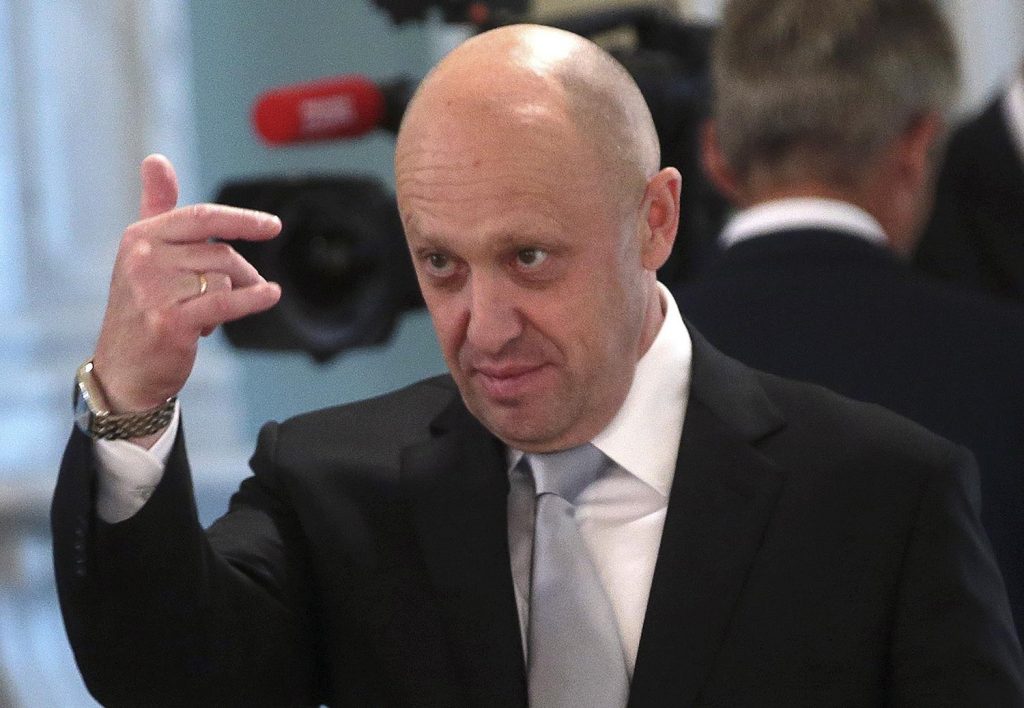
For the third week now, the scandal surrounding the curator of Wagner PMC Yevgeny Prigozhin and the military leadership of the Russian Federation represented by Defense Minister Sergei Shoigu and Chief of the General Staff Valery Gerasimov has not subsided (Ascolta analysed these events in its previous digests: here and here). At the same time, the conflict only intensified over the past week, and despite the fact that Wagner PMCs still remained in their positions in Bakhmut, Prigozhin’s statements became even sharper and more defiant.
Timeline:
- On Tuesday, May 9, Yevgeny Prigozhin reiterated that his PMC was preparing to leave Bakhmut. He said that on May 8, he received a fighting order from the General Staff, which stated that PMC “Wagner” withdrawal from the positions would be considered treason. But, according to the Wagner curator, the PMC will still withdraw from its positions if ammunition is not supplied. Prigozhin also said that he never received the promised shells.
- On the same day, in his video message, Prigozhin spoke about a particular decision-maker, “grandfather”, who may turn out to be a “[dickhead]”: thinks he’s fine.” “If he [grandfather] turns out to be right, then God bless everyone. But what should our children, grandchildren, the future of Russia do, how to win the war, if it suddenly turns out, I assume that this grandfather is a complete [dickhead],” Prigozhin said in the video.
- At the same time, the French Parliament voted to recognise PMC Wagner as a terrorist organisation.
- On Wednesday, May 10, Putin’s spokesman Dmitry Peskov said that the Kremlin did not notice Prigozhin’s statement yesterday. Instead, he again threatened to leave Bakhmut due to the lack of promised ammunition supplies and accused the Russian army of surrendering positions.
- Evgeny Prigozhin commented on his statement about “grandfather” and made it clear that by “grandfather”, he meant Valery Gerasimov, Chief of the General Staff of the Russian Army, and not Putin, as many thought yesterday.
- The Russian “opposition” publication Meduza, citing sources in Putin’s administration, said the Kremlin perceived Prigozhin’s new criticism of the Russian Defense Ministry and his intention to leave Bakhmut as a “serious threat”.
- Russian telegram channels associated with Prigozhin began to actively distribute campaign pictures in which he acts as a candidate for the Russian presidency in the 2024 elections.
- On Thursday, May 11, in an interview with the Serbian channel ATV, Putin’s spokesman Dmitry Peskov said that the PMC would not leave Bakhmut and noted that the city would be “taken under control” by Russian forces.
- In his following video message, Yevgeny Prigozhin said that he did not believe Zelensky’s words that the counteroffensive was postponed. According to him, the Armed Forces of Ukraine have already launched a counteroffensive in the Bakhmut direction, pushing through the flanks. He also stated that units of the Russian Armed Forces are losing ground and running away, exposing their flanks.
- In the evening of the same day, on the air of the Russia-1 TV channel, war correspondent Yevgeny Poddubny (part of Prigozhin’s media pool) said that the Armed Forces of Ukraine launched an attack near Soledar and were trying to surround Bakhmut. Later, in a number of telegram channels associated with Prigozhin, information about the counteroffensive of the Armed Forces of Ukraine in the Kherson, Zaporizhzhia, Donetsk and Lugansk oblasts began to be actively disseminated.
- On Friday, May 12, Prigozhin’s press service published his letter to Shoigu calling him to visit Bakhmut: Bakhmut, who is under the control of paramilitary units of the Russian Federation, and independently assess the current situation,” writes Prigozhin.
- On Saturday, May 13, Prigozhin almost openly called on the military personnel of the RF Armed Forces to sabotage the orders of the command: “In this war, the only brainless saint and innocent in all [the losses – ed.] is a Russian soldier who was left to fend for himself and decided that he should die as they like from their mahogany cabinets. And therefore, when this Russian soldier understands what is happening around them and raises his head, I am sure he will figure out who is framing him and tear his ass on the fascist sign guilty of the tragedy in which he was abandoned,” said Prigozhin.
Outcomes and outlook:
Prigozhin continues to build up his presence in the media, making loud statements and attracting public attention. In addition to the intensification of the election campaign, we are witnessing an increasingly sharp shift in the main emphasis of the war from hostilities to internal proceedings. Thus, in Russia, the internal struggle has noticeably intensified, which, despite many analysts’ expectations, is unlikely to weaken the system to a critical level. Such a struggle is that part of the system that allows it to be updated and developed, receiving new personnel and new, often more challenging approaches to activity.
In fact, Prigozhin plays a very modest role in the system itself, but this role is much more significant for Ukraine and the West. The media activity of Prigozhin and PMC Wagner is mainly concentrated in telegram channels, which are often included in the media pool of Prigozhin himself. At the same time, this pool is actively expanding its network of war correspondents, who, although engaged in propaganda similar to the national media, do not conduct it from studios in Moscow, but from the front, significantly increasing their authority. First, this state of affairs has the necessary effect specifically for the Ukrainian and Western consumers – the audience that consumes such content as more believable. Moreover, the presence of criticism of the authorities in Prigozhin’s media pool automatically increases his popularity among those who sincerely believe in the existence of a conflict between the elites and the imminent overthrow of the Russian authorities.
Prigozhin’s excessive activity is nothing more than a demonstration of the effectiveness of his activities in the necessary role. Trying on the title of leader of the “war party”, Prigogine clearly understands his place and fulfils all the tasks assigned to him. That is why every statement about a withdrawal from positions or a cessation of hostilities ends in nothing more than informational noise.
At the same time, Prigozhin remembers the primary function of the PMC and is actively developing his commercial interests in the temporarily occupied territories of Ukraine. So, according to Ascolta, Wagner PMC received control of salt mining in Bakhmut and several other surviving enterprises in the region (mainly coal mining and other minerals).
For the Kremlin, Prigozhin’s main value lies in the fact that with his rhetoric, he continues to unite the most radical representatives of the “party of war” around him. It is worth noting that Putin controls Prigozhin. Despite several arguments in favour of his independence, it should be understood that a person whose primary business is an activity prohibited by the Criminal Code of the Russian Federation (private military campaigns are banned in Russia) cannot play an independent game at a similar level, even if he has his army. A controlled association of the most radical elements is obtained with the aim of their further localisation or marginalisation.
- NEW ARTICLE BY VICTOR MEDVEDCHUK FOR THE RUSSIAN EDITION “TELEGRAPH”
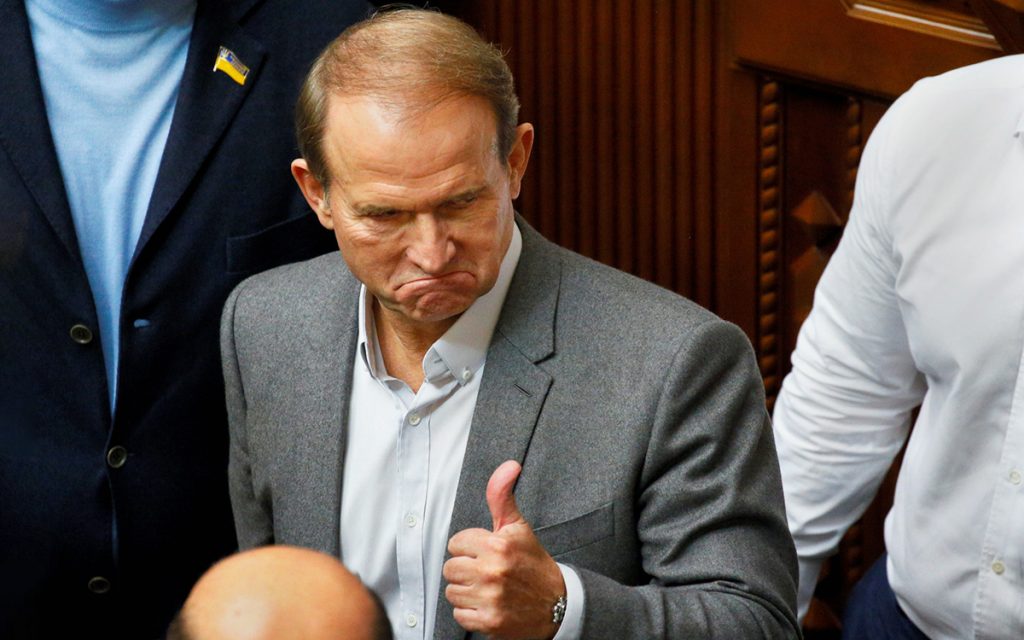
On Thursday, May 11, another article was published by the ex-deputy of the Verkhovna Rada and collaborator Viktor Medvedchuk, entitled “What is it, the real Ukraine.” In this article, a person who has never been distinguished by an understanding of the underlying processes in Ukrainian society once again tried to demonstrate to the Russians his expertise in this matter. But, of course, this event is only some of the significance for the domestic political situation in Russia. At the same time, Ascolta is forced to analyse Medvedchuk’s media activities since there are still forces in the Kremlin that rely on him in attempts to influence domestic political processes in Ukraine.
Key theses:
- “Ukrainians, in general, were devoted to the USSR, even more than Russians. First, the percentage of Communist Party members among Ukrainians was the largest in the USSR. Secondly, Ukrainians made up a significant part of the Soviet elite in Moscow, especially under Brezhnev, that is, in the late USSR. Thirdly, the Ukrainians were the backbone of all the law enforcement agencies of the Soviet Union since they were traditionally considered trustworthy and disciplined.”
- “It was these traditions and cultural clichés that gave hope to the Russians that the Ukrainian brothers would not shoot at them. The only thing is that the Russians were met not by those Ukrainians, whom they usually could observe in abundance in their country. They were completely different Ukrainians.”
- “So, modern post-Soviet Ukrainians are no longer Soviet people but cannot be called Europeans either. If they were Europeans, they would have no problems with Russia.”
- “Ukraine has been a hotbed of instability with Russia for many years, and it has been pushed into this role for a long time. But, unfortunately, western foundations, embassies and intelligence agencies did not even try to spread the European mentality, which implies law-abidingness, tolerance, courtesy and gallantry in communication.”
- “Ukrainians were encouraged to be aggressive, hysterical and ostentatious rudeness. The victim’s complex was imposed on the Ukrainian people, who must take revenge on their executioner, even at the cost of his life. Manipulations in the interpretation of history, hatred of Russian culture and language, and the introduction of violence and murder into everyday political life imposed all this.
- “Soviet Ukraine, no matter how you look at it, had nothing of the kind. Therefore, we can say that the modern Ukrainian mentality was grown in American test tubes for the conflict with Russia.”
- “Today, political Ukrainians are a psychological weapon against Russia, and they are incapable of more.”
- “Today, this hysteria is actively infecting Europe and moving it towards a big war.”
- “The type of a modern pro-Western Ukrainian is closest to the psychological type of a police collaborator from the time of the occupation of Ukraine by the Nazis. Such a person is distinguished by gloominess, cruelty to defenceless people and slavish obedience to the owners of the “correct race”.
- “Zelensky is worth absolutely nothing without Western help; without it, an unenviable fate awaits him, as well as, in fact, his entire team.”
- “Why is canonical Orthodoxy being destroyed in Ukraine? Yes, because, according to Western curators, it stood in the way of Ukrainians to Europe. That is, the path of Ukrainians to Europe is already seen as a religion, not a political process.”
- “Ukrainians have been taught that it is not necessary to make money with the help of diligence, intelligence and talent; they will get everything in Europe anyway, without any extra work. Hostilities for many Ukrainians were not grief but an opportunity to sit on the neck of other states.
- “Today’s unity of Ukrainian citizens, which Zelensky constantly shouts from all the stands, is artificial. No one united Ukrainian society but purposefully divided it until it stopped resisting. Any non-pro-Western opposition, any non-pro-Western politics, culture and ideas are being eradicated.”
- “Real Ukraine is completely different. Ukrainians have always been capable, hardworking and non-aggressive people, speaking melodiously and having a deep history of Orthodoxy. Let’s compare a German and a Nazi, an Italian and a fascist, and a Ukrainian and a contemporary neo-Nazi. We will get different people, most likely, opposite in their qualities.”
Outcomes and outlook:
Viktor Medvedchuk continues to play in the media, occasionally reminding himself of himself in the media space. Unlike the first article, all subsequent ones were not programmatic in nature and are just a reminder beacon. Medvedchuk publishes materials not to motivate and consolidate his supporters but to remind himself of himself.
The thesis about “another Ukraine” spills over from one empty text to another; Medvedchuk does not offer any constructive ideas and a holistic vision of this “other” or “real” Ukraine. Conceptually, Medvedchuk’s articles are empty and meaningless, but they are intended for a narrow audience and will not be read directly in Ukraine. Its audience is concentrated in Moscow and its environs, groups of Ukrainian fugitives who settled in Russia after 2014 and after 2022. This explains why the level of media in which Medvedchuk’s materials appear is getting lower and lower.
At the same time, the Kremlin’s attempt to form a pool of former Ukrainian politicians in the temporarily occupied territories directly related to the creation of the constitutional foundations of Ukraine is noticeable. Thus, quite recently, it became known about the nomination of the former Minister of Education of Ukraine Dmitry Tabachnik, who, while holding the post of head of the presidential administration under Kuchma, was considered one of the most influential architects of modern Ukraine. At the same time, Viktor Medvedchuk has repeatedly mentioned that he is a co-author of the current Constitution of Ukraine.
Apparently, we are dealing with Kremlin technologists (most likely, we are talking about the Kiriyenko group), who still believe in the possibility of resuscitation of such political corpses as Medvedchuk, Azarov, Yanukovych, Tabachnik and several other “regionals”. At the same time, even if such a project is created in the temporarily occupied territories of Ukraine, one can predict its imminent collapse due to a large number of internal contradictions and conflicts of interest.
